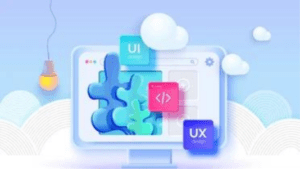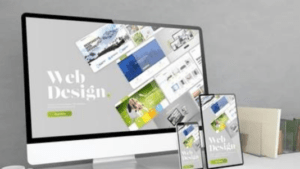In recent years, Uber has become one of the most recognizable brands in the world. The ride-sharing service has revolutionized the way people think about transportation and has made getting around in cities easier and more convenient than ever before. A major factor contributing to Uber’s success is its web design, which has been crafted to provide a seamless user experience from start to finish. In this blog post, we’ll explore how Uber’s web design simplifies transportation for its users.
Section 1: Understanding the User Journey
To understand how Uber’s web design simplifies transportation, it’s important to first understand the user journey. The user journey refers to the series of steps a user takes to complete a task or achieve a goal, such as booking a ride. Uber’s user journey is relatively straightforward, with a few key steps:
- User opens the Uber app or visits the Uber website
- User inputs their pickup location and destination
- User selects the type of ride they want (e.g., UberX, UberPOOL, etc.)
- User confirms their pickup and drop-off locations and selects a payment method
- User receives confirmation of their ride and is able to track their driver in real-time
- While this process may seem simple, it requires a lot of complex functionality behind the scenes. Uber’s web design plays a key role in making this process as seamless as possible for its users.
Section 2: Simple and Intuitive Design
One of the key aspects of Uber’s web design is its simplicity. The website and app have a clean and uncluttered interface, with a limited color palette and straightforward typography. This simplicity helps to reduce cognitive load on users and makes it easy for them to navigate through the app or website.
Another aspect of Uber’s design is its intuitive interface. Users are presented with clear and easy-to-understand options at each step of the user journey. For example, when selecting a ride type, users are presented with clear icons and descriptions of each option, making it easy for them to choose the right ride for their needs.
Section 3: Personalization and Localization
Another key aspect of Uber’s web design is its use of personalization and localization. When users open the app or visit the website, they are presented with a personalized experience based on their location and past ride history. This personalization helps to reduce friction and makes it easier for users to book a ride quickly.
In addition, Uber’s localization features make it easy for users to navigate the app or website in their native language. This is particularly important for users in non-English speaking countries, where language barriers can be a significant obstacle to using the service.
Section 4: Seamless Payment and Checkout Process
Another important aspect of Uber’s web design is its seamless payment and checkout process. Users are able to add multiple payment methods to their account, and the app or website automatically selects the appropriate payment method based on the user’s location and ride type. This helps to reduce friction and make the payment process as seamless as possible.
In addition, Uber’s checkout process is designed to be as quick and easy as possible. Users are able to confirm their ride and payment details with just a few clicks, and the app or website provides real-time updates on the status of their ride.
Section 5: Real-time Updates and Feedback
Finally, Uber’s web design incorporates real-time updates and feedback to help users stay informed about their ride. Users are able to track their driver in real-time, see an estimated arrival time, and receive notifications about any delays or changes to their ride.
In addition, users are able to provide feedback on their ride after it’s complete. This feedback is used to improve the overall quality of the service and provide users with a better experience in the future.
Section 6: Accessibility Features
One important aspect of Uber’s web design is its accessibility features. The app and website are designed to be accessible to users with disabilities, including those who are visually impaired or have mobility impairments. For example, the app includes a screen reader and voiceover functionality, and the website includes high-contrast options and keyboard navigation.
Section 7: Integration with Other Services
Another important feature of Uber’s web design is its integration with other services. Users are able to link their Uber account with other apps and services, such as Google Maps or Spotify. This integration makes it easier for users to access all the information they need in one place and enhances the overall user experience.
Section 8: Social Media Integration
Uber’s web design also incorporates social media integration, allowing users to share their ride details on social media platforms like Facebook and Twitter. This feature not only promotes the service but also allows users to share their positive experiences with friends and family.
Section 9: User Profiles
Uber’s web design also includes user profiles, which allow users to save their personal information and ride preferences. This feature makes it easier for users to book rides quickly and efficiently, as they do not have to input their information every time they use the service.
Section 10: Promotions and Discounts
Uber’s web design also incorporates promotions and discounts to incentivize users to use the service. These promotions can be tailored to individual users based on their ride history and preferences, and can include discounts on future rides or referral bonuses.
Section 11: In-app Support
Another important aspect of Uber’s web design is its in-app support. Users are able to access help and support directly through the app or website, including the ability to contact customer support or report a problem with their ride.
Section 12: Driver Ratings and Feedback
In addition to allowing users to provide feedback on their ride, Uber’s web design also incorporates driver ratings and feedback. Users are able to rate their driver based on factors like professionalism and cleanliness, and this feedback is used to improve the overall quality of the service.
Section 13: Ride-sharing Features
Uber’s web design also incorporates ride-sharing features, such as the ability to split the cost of a ride with other users. These features make the service more affordable and accessible to a wider range of users.
Section 14: Safety Features
Finally, Uber’s web design includes safety features, such as in-app safety tools and emergency assistance. These features are designed to ensure that users feel safe and secure when using the service.
Overall, Uber’s web design plays a critical role in simplifying transportation for its users. The app and website are designed to be simple, intuitive, and personalized, with seamless payment and checkout processes and real-time updates and feedback. In addition, the app and website incorporate a range of other features, including accessibility features, integration with other services, social media integration, user profiles, promotions and discounts, in-app support, driver ratings and feedback, ride-sharing features, and safety features. All of these features work together to provide a seamless user experience and ensure that Uber remains one of the most popular and convenient transportation services in the world.



